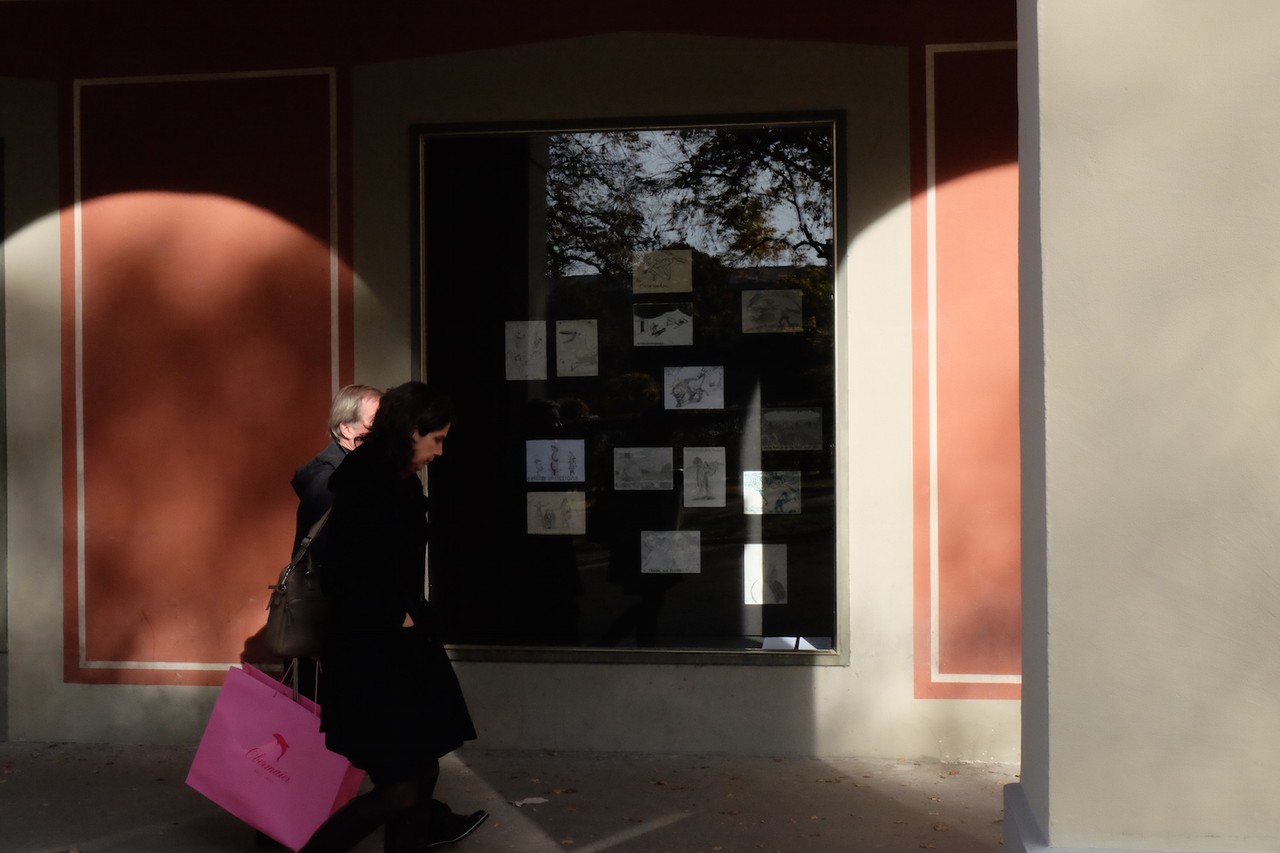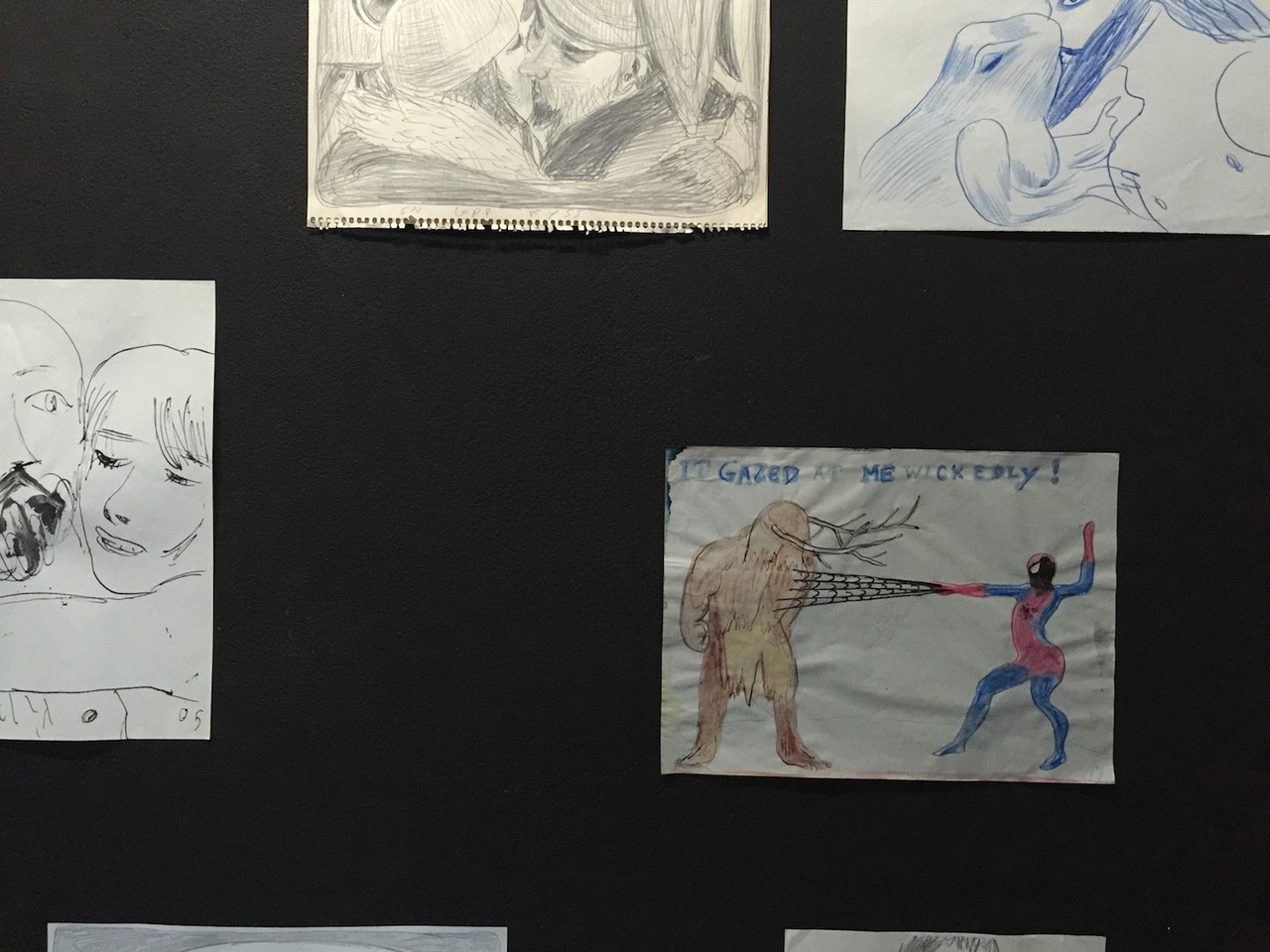Gonçalo Pena
Unfinished Mandarin
13 Sep 2016 - 08 Jan 2017
GONÇALO PENA
Unfinished Mandarin
13 September 2016 - 8 January 2017
From 13 September 2016 until 8 January 2017, Kunstverein München presents Unfinished Mandarin – a rotating exhibition of drawings by Gonçalo Pena in the Schaufenster am Hofgarten, co-organized with João Maria Gusmão and Pedro Paiva.
Working between Lisbon and Bergen, Gonçalo Pena produces paintings, films, drawings, performances, graphic designs, and art criticism. While Pena has exhibited his work extensively across Europe, perhaps his most widespread influence has been in the pages of some of the most important Portuguese newspapers and magazines (Independente, Publico, Ler, Egoísta, Livros), where he worked as an illustrator and political cartoonist for many years.
Pena never stopped drawing, and continues to produce torrents of images, many of which rarely have seen the light of day. Friends, fans, and artist-colleagues João Maria Gusmão and Pedro Paiva recently encouraged Pena to publish and exhibit some of the results of this prolific production from the last decades. By curating a selection of Pena’s work, the pair of artists add their cinematic imprimatur and enthusiasm to his astonishing and varied output.
Drawing for Pena is not merely a tool for depiction, but also a means for analysis and digestion. Pena is a world builder who draws from the entirety of figurative representation and real and fictional histories to produce ludicrous and iconoclastic scenarios that are at once erotic, irreverent, deeply philosophical, and critically penetrating. In his unframed drawings, characters from literature, mythology, history, philosophy, pop culture, art history, and past and present politics are all drawn together, interact, exchange roles, and often engage in sordid affairs. Each page becomes an abstract stage where hierarchies are annulled, past and present intersect, the living and the dead meet, abuse and sexuality run side by side, and distinctions between animals, mythological creatures, and humans are either erased or serve as an impetus for inter-species intercourse. At times the drawings are overtly political, or illustrative of a concept or series of developments. At others, they function as carriers for one-liners and thought experiments – demonstrating how an image can provide an entry point to the nether regions of the psyche.
Like the protagonists depicted, Pena’s line is in continuous transformation, a constant state of becoming, thus demonstrating the protean possibility of drawing itself. One recognises symbols, characters, and possible allegories, but a concrete meaning never arrives, leaving the viewer to address the intimacy and immediacy of the image. Remarkably diverse, some pictures demonstrate Pena’s skillful draftsmanship, while others function as rapid sketches that represent an idea in the quickest way possible. His materials are equally promiscuous: rendering images in graphite, colored pencil, pen, brush, watercolor, and ink, sometimes with written or printed texts, titles, and phrases in Portuguese, French, English, German, Greek, and Norwegian. Unleashing endless variations upon the world, these disparate depictions with diverse subjects and representational methods form a sort of disjointed poetry that generates unexpected connections.
For Unfinished Mandarin, Lisbon-based artists and Pena-enthusiasts João Maria Gusmão and Pedro Paiva will display a sporadically changing procession of presentations of Pena’s pictures every two weeks over the course of the fall. Along with many others, these drawings will also be published in a book of the same name, a follow up to their 2014 book Monkey Trip (published by Mousse), ) – accompanied by written contributions from Gusmão, Paiva, Post Brothers, and Kunstverein Director Chris Fitzpatrick. While the publications present a linear, almost cinematic, sequence of Pena’s drawings, the Schaufenster exhibition conversely displays the images in a procession of variable layouts and groupings that allows for more complex and multiple associations to be made from their juxtaposition.
Unfinished Mandarin
13 September 2016 - 8 January 2017
From 13 September 2016 until 8 January 2017, Kunstverein München presents Unfinished Mandarin – a rotating exhibition of drawings by Gonçalo Pena in the Schaufenster am Hofgarten, co-organized with João Maria Gusmão and Pedro Paiva.
Working between Lisbon and Bergen, Gonçalo Pena produces paintings, films, drawings, performances, graphic designs, and art criticism. While Pena has exhibited his work extensively across Europe, perhaps his most widespread influence has been in the pages of some of the most important Portuguese newspapers and magazines (Independente, Publico, Ler, Egoísta, Livros), where he worked as an illustrator and political cartoonist for many years.
Pena never stopped drawing, and continues to produce torrents of images, many of which rarely have seen the light of day. Friends, fans, and artist-colleagues João Maria Gusmão and Pedro Paiva recently encouraged Pena to publish and exhibit some of the results of this prolific production from the last decades. By curating a selection of Pena’s work, the pair of artists add their cinematic imprimatur and enthusiasm to his astonishing and varied output.
Drawing for Pena is not merely a tool for depiction, but also a means for analysis and digestion. Pena is a world builder who draws from the entirety of figurative representation and real and fictional histories to produce ludicrous and iconoclastic scenarios that are at once erotic, irreverent, deeply philosophical, and critically penetrating. In his unframed drawings, characters from literature, mythology, history, philosophy, pop culture, art history, and past and present politics are all drawn together, interact, exchange roles, and often engage in sordid affairs. Each page becomes an abstract stage where hierarchies are annulled, past and present intersect, the living and the dead meet, abuse and sexuality run side by side, and distinctions between animals, mythological creatures, and humans are either erased or serve as an impetus for inter-species intercourse. At times the drawings are overtly political, or illustrative of a concept or series of developments. At others, they function as carriers for one-liners and thought experiments – demonstrating how an image can provide an entry point to the nether regions of the psyche.
Like the protagonists depicted, Pena’s line is in continuous transformation, a constant state of becoming, thus demonstrating the protean possibility of drawing itself. One recognises symbols, characters, and possible allegories, but a concrete meaning never arrives, leaving the viewer to address the intimacy and immediacy of the image. Remarkably diverse, some pictures demonstrate Pena’s skillful draftsmanship, while others function as rapid sketches that represent an idea in the quickest way possible. His materials are equally promiscuous: rendering images in graphite, colored pencil, pen, brush, watercolor, and ink, sometimes with written or printed texts, titles, and phrases in Portuguese, French, English, German, Greek, and Norwegian. Unleashing endless variations upon the world, these disparate depictions with diverse subjects and representational methods form a sort of disjointed poetry that generates unexpected connections.
For Unfinished Mandarin, Lisbon-based artists and Pena-enthusiasts João Maria Gusmão and Pedro Paiva will display a sporadically changing procession of presentations of Pena’s pictures every two weeks over the course of the fall. Along with many others, these drawings will also be published in a book of the same name, a follow up to their 2014 book Monkey Trip (published by Mousse), ) – accompanied by written contributions from Gusmão, Paiva, Post Brothers, and Kunstverein Director Chris Fitzpatrick. While the publications present a linear, almost cinematic, sequence of Pena’s drawings, the Schaufenster exhibition conversely displays the images in a procession of variable layouts and groupings that allows for more complex and multiple associations to be made from their juxtaposition.




